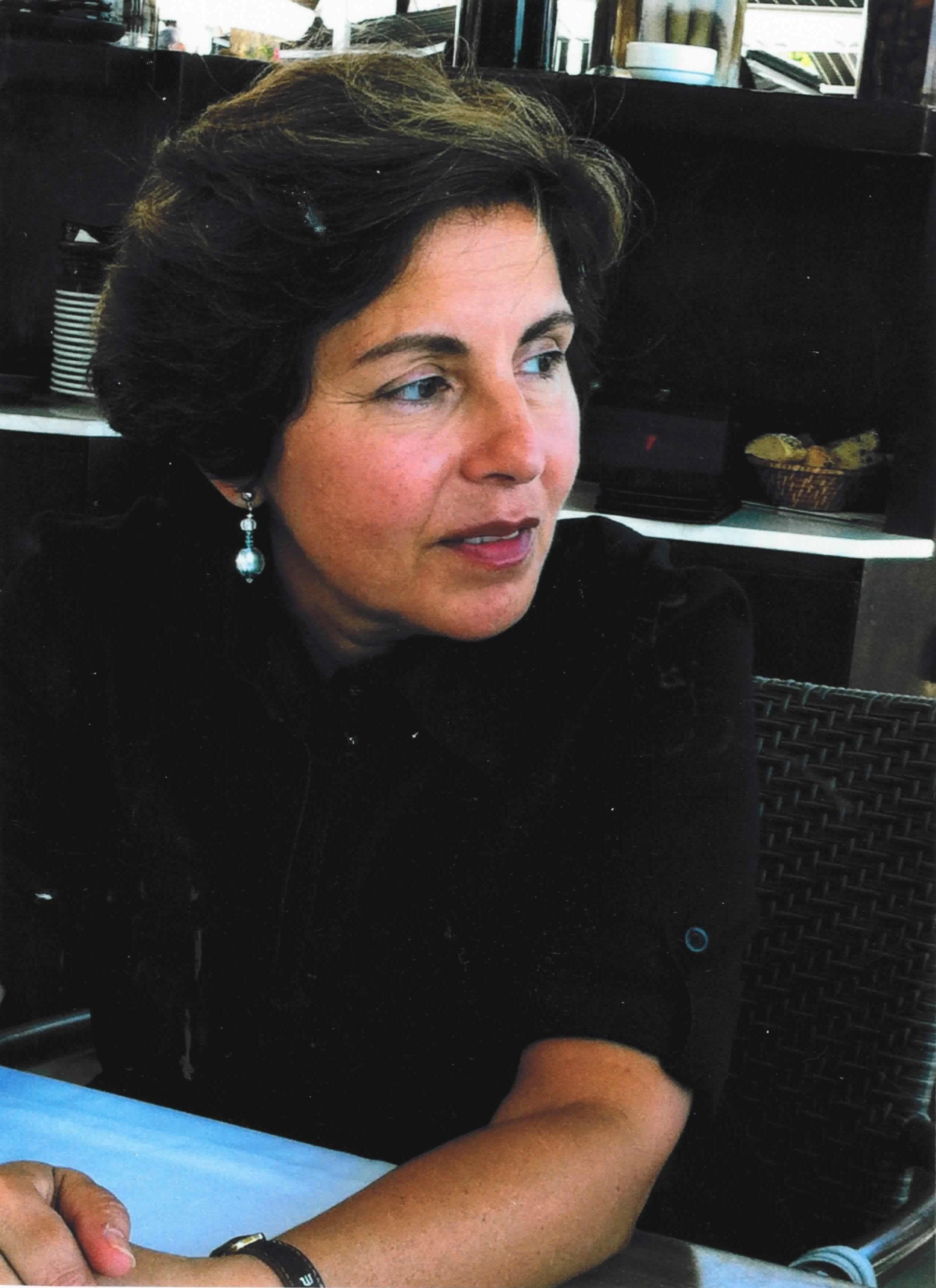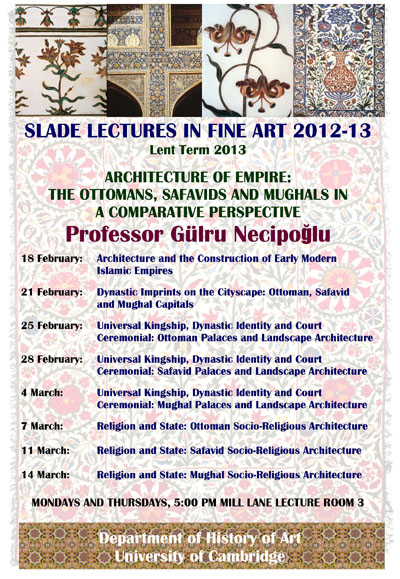
Submitted by M.L. R. Grove on Thu, 17/01/2013 - 12:55
 The Lecture Series is entitled Architecture of Empire: The Ottomans, Safavids and Mughals in a Comparative Perspective.
The Lecture Series is entitled Architecture of Empire: The Ottomans, Safavids and Mughals in a Comparative Perspective.
Professor Necipoğlu has been the Aga Khan Professor of Islamic Art and Director of the Aga Khan Program for Islamic Architecture at the Department of History of Art and Architecture in Harvard University since 1993, where she earned her PhD in 1986.
Her dissertation was titled, “The Formation of an Ottoman Imperial Tradition: The Topkapı Palace in the 15th and 16th Centuries”. In 1986-87, Gülru Necipoğlu was appointed Lecturer at the Columbia University, Department of Art History and Archaeology, and Mellon-David Heyman Fellow in Urban Studies at the Society of Fellows in the Humanities. Between 1987 and 1993 she taught as an Assistant Professor and Associate Professor at the Harvard University Department of History of Art and Architecture. Gülru Necipoğlu is a Fellow of the American Philosophical Society, and the American Academy of Arts and Sciences, and a board member of the Centro Internazionale di Studi di Archittettura Andrea Palladio in Vicenza. She is the editor of Muqarnas: An Annual on the Visual Cultures of the Islamic World and her books include Architecture, Ceremonial Power: The Topkapi Palace (1991); The Topkapi Scroll, Geometry and Ornament in Islamic Architecture (1995); and The Age of Sinan: Architectural Culture in the Ottoman Empire (2005). Her Topkapi Scroll won the Albert Hourani and the Spiro Kostoff book awards. The Age of Sinan has received the Fuat Köprülü Book Prize and Honorable Mention by the Albert Hourani Book Award.
The lectures will take place weekly at 5:00 pm on Mondays and Thursdays during Lent Term at Mill Lane Lecture Room 3.
The subject of these lectures is an interpretation of the interconnected architectural cultures of three early modern Islamic empires, which partitioned the Eastern Islamic lands from the Balkans to Bengal together with the Uzbeks in Central Asia: The Mediterranean-based Ottomans, the Safavids in Iran, and the Mughals in the Indian subcontinent. During the 16th and 17th centuries, these three great empires developed distinctive architectural and ornamental idioms, originating from a previously shared “international Timurid” cultural heritage that merged Turco-Mongol and Perso-Islamic elements. The lecture series begins with a general introduction to the contexts of architectural production in the three empires. The second lecture introduces the capital cities of each empire as the primary setting for major architectural monuments. This is followed by a comparative analysis of iconic monuments in each empire, grouped according to two main building types: three lectures on palaces and landscape architecture, and three lectures on socio-religious monuments. The intimate connection between empire building and architecture is explored with respect to aesthetics, historical contexts, religious orientations, imperial ideologies, and theories of dynastic legitimacy.
18 February: Architecture and the Construction of Early Modern Islamic Empires
21 February: Dynastic Imprints on the Cityscape: Ottoman, Safavid and Mughal Capitals
25 February: Universal Kingship, Dynastic Identity and Court Ceremonial: Ottoman Palaces and Landscape Architecture
28 February: Universal Kingship, Dynastic Identity and Court Ceremonial: Safavid Palaces and Landscape Architecture
4 March: Universal Kingship, Dynastic Identity and Court Ceremonial: Mughal Palaces and Landscape Architecture
7 March: Religion and State: Ottoman Socio-Religious Architecure
11 March: Religion and State: Safavid Socio-Religious Architecure
14 March: Religion and State: Mughal Socio-Religious Architecure
